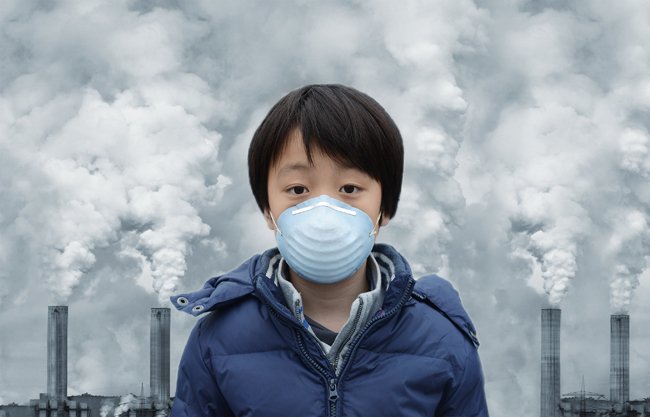Air pollution is a serious, though often unrecognized health problem. Numerous studies consistently point to a direct link between air pollution and cardiovascular and lung disease. Prolonged exposure to contaminated particles is also known to increase the rate of disease and death from lung cancer and chronic obstructive pulmonary disease. In addition, exposure to other air pollutants is also associated with the development of asthma, bronchitis, and respiratory infections.
Air pollution is associated with heart damage
In addition to lung damage, air pollution is also recognized as a threat to cardiovascular health. The study, published in the Journal of the American Medical Association, examined long-term health data from 500,000 individuals to compare the increase in air pollution levels with the incidence of death. It has been found that the increase in air pollution levels, in addition to the expected increase in deaths from asthma and pneumonia, unexpectedly increases the number of deaths associated with heart attack and stroke.
The only possible explanation for the increase in cardiovascular-related deaths is that air pollution causes oxidative stress which in turn causes an inflammatory response in the lungs, leading to the release of chemicals that disrupt heart function and blood pressure.
Another mechanism involved in heart failure is associated with air pollution involving bone marrow and atherosclerotic plaques. Researchers in Vancouver found that exposure to high levels of air pollution stimulates the bone marrow to release leukocytes and platelets, which preferably accumulate in the pulmonary capillaries. In addition to damaging lung tissues, the researcher also observed that inhalation of contaminated particles causes changes in atherosclerotic plaque lesions.
Diabetics and the elderly are at higher risk
Diabetics are particularly susceptible to cardiovascular damage caused by air pollution. A recent study found that diabetics were twice as likely to be admitted to the hospital due to cardiovascular problems caused by polluted air particles. It has also been found that people over the age of 75 face a higher risk of cardiovascular disease.
Children and air pollution
Children are at particular risk due to health problems associated with polluted air. Chronic exposure to particles, sulfur dioxide, and nitrogen dioxide has been associated with an increase in chronic respiratory symptoms. Exposure to car pollution, especially from exhaust trucks and diesel, has been shown to cause a significant increase in respiratory symptoms and a decrease in lung function. One study found that two-year-olds who were exposed to higher levels of polluted air were more likely to suffer from asthma, ear, nose, throat infections, flu and severe colds.
This problem is explained by the fact that children, relative to their size, breathe deeper and pollute their lungs with more particles from the air than adolescents or adults. Children also have a faster metabolism and spend more time outside than adults. This worsens their sensitivity to health problems associated with polluted air.
How does pollution affect the skin?
Increasing environmental pollution is a cause for panic. As if that weren’t enough, poor air quality is linked to many diseases, and as recent research shows, it also negatively affects facial skin. Moreover, smog seems to be the main culprit for premature aging.
Although a lot of hot beauty innovations can be relatively questionable, the need for protection from atmospheric enemies seems to be extremely great. Will anti-pollution skincare products become an essential part of our anti-aging arsenal as was the case with the protection factor? It is too early to talk about it, but it is certain that we understand the mechanisms by which air pollution damages the skin. In large cities, protection is paramount because damage can occur very quickly. And what is worrying is that we still don’t know to what extent it affects skin health.
How to protect the lungs?
Although living outside polluted urban areas is an obvious choice, this option is not always possible. Also, this option is not always effective either, and air currents and weather patterns can move polluted air from urban centers to rural areas where pollution can be concentrated. In addition, modern agriculture produces more food with fewer workers, using improved productivity methods that increasingly rely on the use of agricultural pesticides and chemicals.
Staying indoors does not guarantee better air quality. Several studies have shown that most of the health risk associated with polluted air actually occurs indoors.
Humidifier
Home air filtration products offer a number of options. Until recently, these products, which were designed for entire houses and buildings, were bulky and expensive to install and maintain. Recently, a number of consumer products that use ion technology to remove pollutants, allergens and viruses from the air have become available. Such an ideal product is the Rovus 3in1 humidifier. This amazing device can refresh every room in your home, and improve the quality of the air in the room, eliminate bad odors and create a pleasant ambience with its soothing light.
Scientists have proven that maintaining the optimal level of humidity in the rooms we stay in prevents infections, colds and flu. It also relieves allergy and asthma symptoms, and keeps the nasal passages open and free. With Rovus Ambient Mist humidifier 3in1 you can eliminate bad smells and replace them with a fresh and discreet scent of your choice. Rovus Ambient Mist can also serve as a beautiful ambient light, and you can choose from 7 different color shades for a cozy atmosphere. This is an ideal device for all those who want to enjoy a healthier environment and protect themselves from harmful particles in the air.
Limit exposure to firecrackers
The smoke released from firecrackers contains pollutants, such as sulfur dioxide and carbon monoxide, which can trigger asthma, chronic bronchitis, the common cold, pneumonia, laryngitis, etc. They can also worsen all of your respiratory health problems. So try to limit your exposure to firecrackers. Also, avoid going outside when the air quality is poor.
Wear a face mask
Choose a face mask that comes with sub-micron filters as it can help prevent most particles from entering your lungs. If you don’t like wearing a mask, try wearing a scarf or covering your face with a handkerchief. This way you will at least to a lesser extent avoid inhaling smoke and dust.
Nutrition is also important
By consuming a healthy, balanced diet, which consists of lots of fresh fruits and vegetables, you can reduce swelling and lung irritation. Diet plays a vital role in the severity of asthma symptoms. Research shows that there are certain foods that can help strengthen your immune system and fight pollution. A healthy diet can help you maintain an ideal weight and keep your asthma symptoms under control. This will reduce the risk of other respiratory problems. Try to avoid fatty foods, which can disrupt your digestion.
Drink herbal teas
Drinking herbal teas can help you fight the negative effects that air pollution can have on the human body. Medicinal herbs, or medicines that contain herbal compounds, can help relieve congestion of the chest and nose. Also, herbal teas soothe irritated airways, suppress symptoms such as sneezing, coughing and swollen glands.





